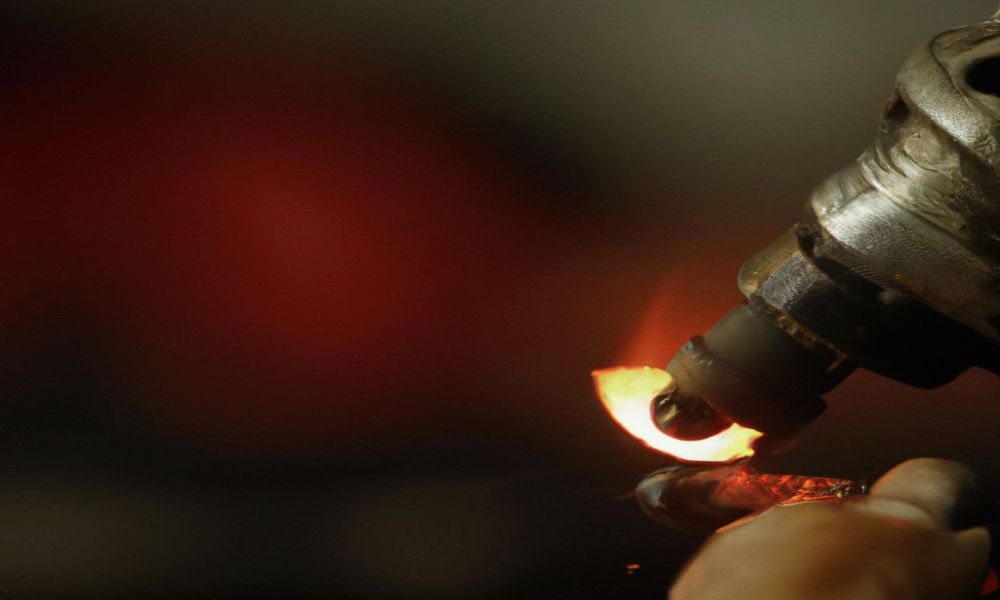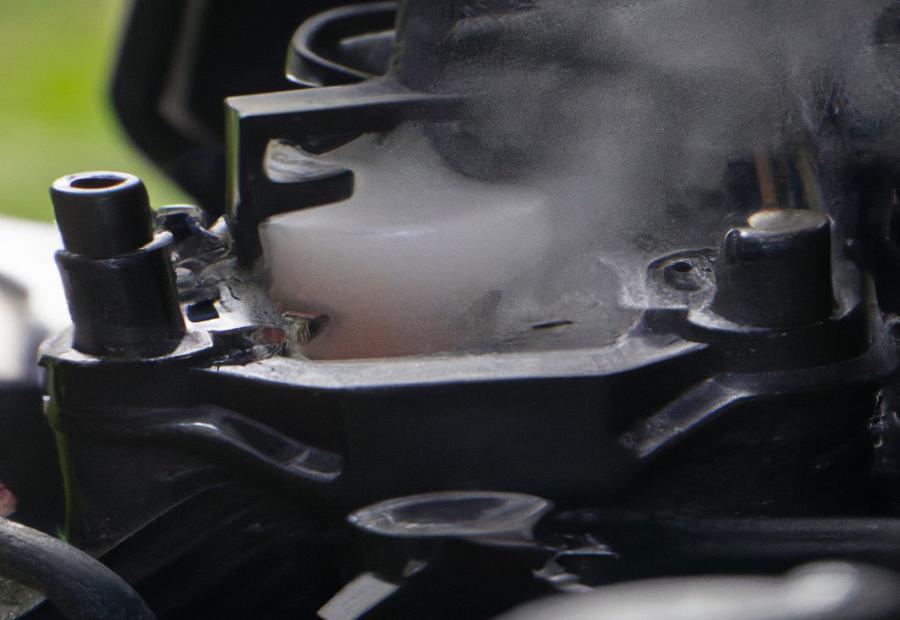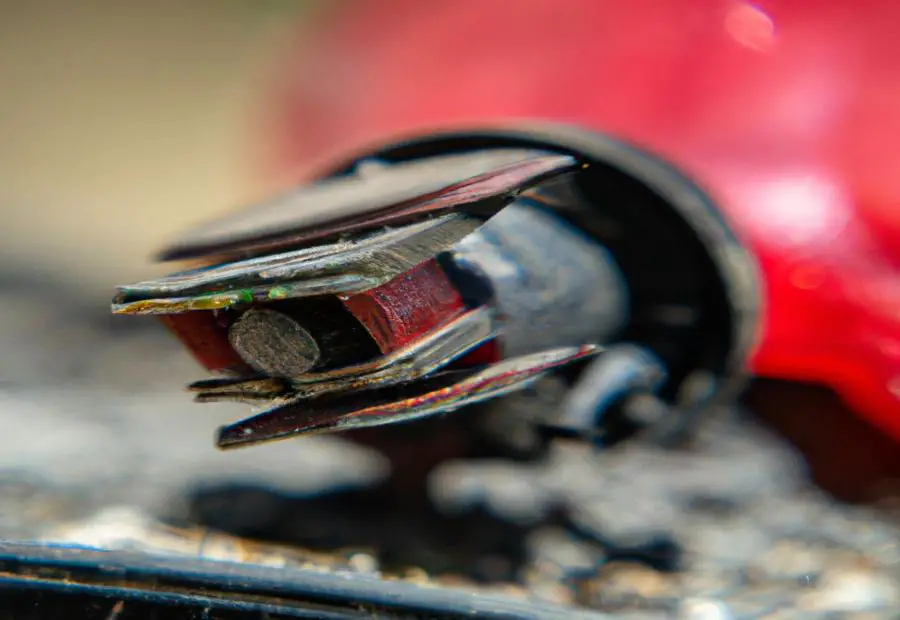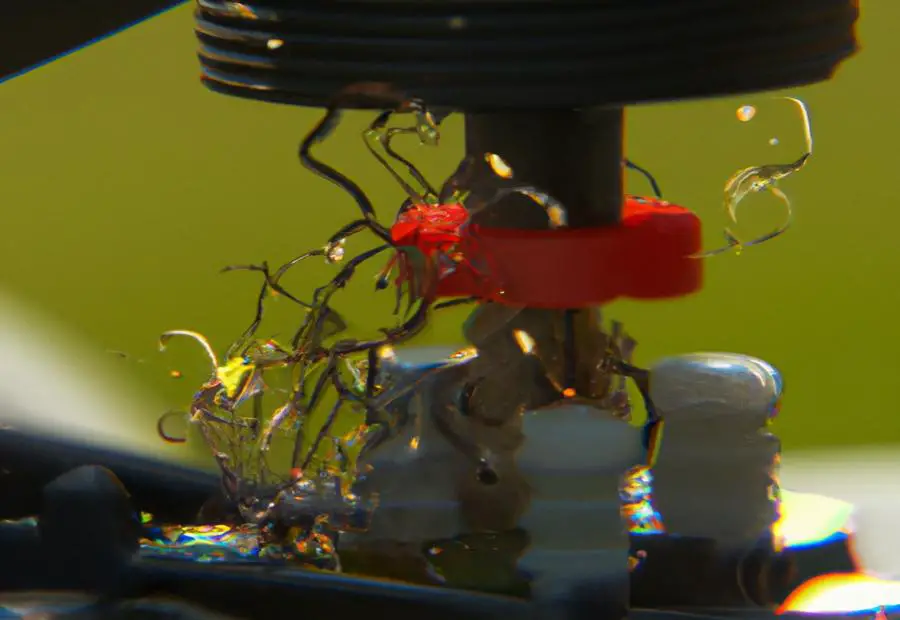GardenerHeaven.com is reader-supported. When you buy through links on our site, we may earn an affiliate commission.

When it comes to a bad ignition coil in your lawn mower, it’s essential to be able to identify the symptoms and understand the process of diagnosis and testing. In this section, we will take a closer look at the symptoms you may encounter with a faulty ignition coil and explore the necessary steps for effective diagnosis and testing. By equipping yourself with this knowledge, you’ll be able to tackle ignition coil issues head-on and keep your lawn mower running smoothly.
Symptoms of a Bad Ignition Coil

Photo Credits: Gardenerheaven.Com by Christian Brown
A bad ignition coil can cause signs of an ignition system issue. These symptoms can help you diagnose and tell if the coil needs replacing.
- Engine Misfires: Spark plugs may not ignite fuel correctly, leading to engine misfires and power loss.
- Stalling & Starting Issues: The engine may stall or take multiple attempts to start.
- Poor Fuel Economy: Incomplete burning of fuel leads to increased fuel consumption.
- Decreased Performance: Poor acceleration, speed, and gear changes are all signs.
It’s important to remember that these symptoms can point to other causes. Diagnosis and testing are necessary to know for sure.
Ignoring the signs can lead to extra costs and worse damage. So, it’s best to address the bad coil promptly. Or else your lawn mower could become a fire-breathing dragon!
Diagnosis and Testing
Diagnosing and testing an ignition coil in a lawn mower is important for identifying performance issues. Symptoms point to a need for a thorough diagnosis and testing process. Here’s how to do it:
- Check for spark: Remove the spark plug wire and attach a spark tester. Pull the starter rope. If there’s no spark, it suggests a faulty ignition coil.
- Inspect for damage: Look for any visible cracks or corrosion. Damage can stop the coil working.
- Measure resistance: Use a multimeter to measure the resistance across the ignition coil terminals. Compare to the manufacturer’s specs.
- Test primary circuit: Connect one probe of the multimeter to the positive terminal. Low resistance suggests a healthy primary circuit.
- Test secondary circuit: Connect one probe of the multimeter to one terminal. High resistance or no continuity suggests a problem in the secondary circuit.
- Perform voltage output test: With a special tool, measure the voltage output from both ends of an energized spark plug. Weak or no voltage reading indicates an issue with voltage output.
Note: Diagnosing and testing procedures may vary depending on the model and manufacturer.
Accurate diagnosing and testing can identify issues affecting performance and fix them.
Using an automotive diagnostic scanner can provide more information on faults. This source gives valuable insights into troubleshooting electrical components.
Fixing the Issue: Don’t just imagine the lawnmower is possessed. Address the ignition coil problem.
Fixing the Issue

Photo Credits: Gardenerheaven.Com by Austin Thompson
When it comes to fixing a bad ignition coil in a lawn mower, there are steps to take. Firstly, it’s important to identify symptoms – like misfiring, difficulty starting, or poor performance.
- Inspect the coil for damage or wear – such as cracks, corrosion, or loose connections.
- Use a multimeter to test the primary and secondary windings according to the manufacturer’s instructions.
- Replace the faulty coil by disconnecting the spark plug wires and associated connections.
- Check the spark plugs and wires and replace any worn or damaged ones.
- Start the mower and test it for misfiring and poor performance. Make any additional adjustments as needed.
By following these steps, the issue of a bad ignition coil can be fixed promptly for efficient and reliable mower operation.
Replacement of the Ignition Coil

Photo Credits: Gardenerheaven.Com by George White
The ignition coil in a lawn mower is important. It produces the spark that starts the engine. When it malfunctions, it causes problems with the mower’s performance. To fix it, replacing the coil is the only option.
- Step 1: Diagnosis
To check if the coil is bad, perform these tests. First, look for any visible damage or corrosion. Then, measure the coil’s resistance with a multimeter. If the reading is out of range, the coil is broken. Also, no spark during ignition could be a sign of a faulty coil.
- Step 2: Preparation
Gather the right tools and wear safety gear. Unplug the spark plug wire and remove any parts blocking the coil.
- Step 3: Replacement
Find the coil, usually near the engine. Disconnect the wiring harness and remove the mounting bolts. Put a new coil in place and reinstall the parts. Connect the spark plug wire and test the mower.
For best performance, regular maintenance and timely replacement are essential. Ignoring a bad ignition coil can cause serious engine damage and costly repairs. So, it’s important to act fast and replace the coil when necessary.
Causes of Ignition Coil Failure

Photo Credits: Gardenerheaven.Com by Juan Smith
Ignition coil failure in a lawn mower can have many causes. To begin, heat can be a problem. If the engine gets too hot, it can put too much stress on the ignition coil and make it fail. This can happen if the cooling system is not working correctly or if the mower is used for a long time without stopping.
Also, vibrations can cause issues. Lawn mowers are exposed to vibrations while running, and this can damage the ignition coil. This can be worse if the mower is used on rough ground or if there are mechanical issues with the engine or blade.
Finally, poor maintenance and neglect can also damage the ignition coil. Not doing regular tune-ups, not changing air filters, or using low-quality fuel can all damage the coil. Not taking care of these tasks can put too much stress on the coil, leading to failure.
It is important to address these causes of ignition coil failure. This will help the mower work well and last for a long time. To keep the ignition coil in good shape, people should maintain the cooling system, reduce vibrations, and do regular maintenance.
Conclusion

Photo Credits: Gardenerheaven.Com by Eric Walker
To sum it up, a broken ignition coil in a lawnmower can cause a few issues. Starting the engine can be hard and it can misfire. Analyzing the symptoms and making sure it’s the ignition coil is the way to diagnose it. Replacing it is the best solution as it ensures a strong spark and better engine performance.
Some Facts About Bad Ignition Coil Symptoms Lawn Mower: Signs and Diagnosis:
- ✅ A bad ignition coil can cause a lawn mower to stall after running for a short period of time. (Source: Team Research)
- ✅ Backfiring of the engine when turning the key can be a sign of a faulty ignition coil. (Source: Team Research)
- ✅ Weak or no spark at the spark plug can indicate a faulty ignition coil. (Source: Team Research)
- ✅ The resistance of the ignition coil can vary between different models, but a significant difference in resistance from the original coil may suggest a faulty coil. (Source: Team Research)
- ✅ Testing the ignition coil with a spark plug tester can help diagnose a bad ignition coil. (Source: Garden Guides)
FAQs about Bad Ignition Coil Symptoms Lawn Mower: Signs And Diagnosis
How do I diagnose a faulty ignition coil on my 2004 MTD lawn tractor?
To diagnose a faulty ignition coil on your 2004 MTD lawn tractor, you can follow these steps:
Check if your mower shuts off when it gets hot while mowing the lawn.
Replace the spark plug boot with the boot of an in-line spark tester.
Start the mower when it is cold and observe if there is a normal spark.
If there is a good spark, mow some grass to bring the mower up to operating temperature.
If the mower shuts off again, replace the original wire with the in-line spark tester and attempt to start the motor.
If there is little or no spark, the ignition coil needs replacement.
What are the symptoms of a bad ignition coil in a lawn mower?
The symptoms of a bad ignition coil in a lawn mower can include:
The mower shutting down immediately.
The engine not turning off even when the ignition switch is turned off.
The engine starting but dying shortly after.
Engine misfiring or running poorly.
Poor fuel economy.
The engine cranking but not starting.
How can I replace the ignition coil on my lawn mower?
To replace the ignition coil on your lawn mower, you can follow these steps:
Remove the plastic coverings, grounding wire, and plastic boot from the spark plug.
Use a spark plug tester to check for sparks or if the mower starts.
Remove the electrical plastic pigtail connector and unscrew the coil from the engine.
Check for leaks and contamination, test the coil with a multimeter.
Lubricate the insulator boot, reinstall the coil, and reconnect the negative battery cable.
Why is my replacement ignition coil for my lawn mower smaller than the original one?
The size difference between the replacement ignition coil and the original one may be due to updated designs or improvements in manufacturing. As long as the new coil is compatible with your lawn mower’s make and model, the difference in size should not be a concern.
What can cause a weak spark in the ignition coil of a lawn mower?
A weak spark in the ignition coil of a lawn mower can be caused by faulty wiring in the coil, which prevents the necessary spark. Other potential causes could include a worn or damaged spark plug, incorrect spark plug gap, or problems with the ignition timing.
What are some common causes of ignition coil failure in lawn mowers?
Common causes of ignition coil failure in lawn mowers can include bad spark plugs, worn spark plugs, overvoltage, or general wear and tear over time. It is important to regularly maintain and replace these components to ensure the ignition coil is functioning properly.




